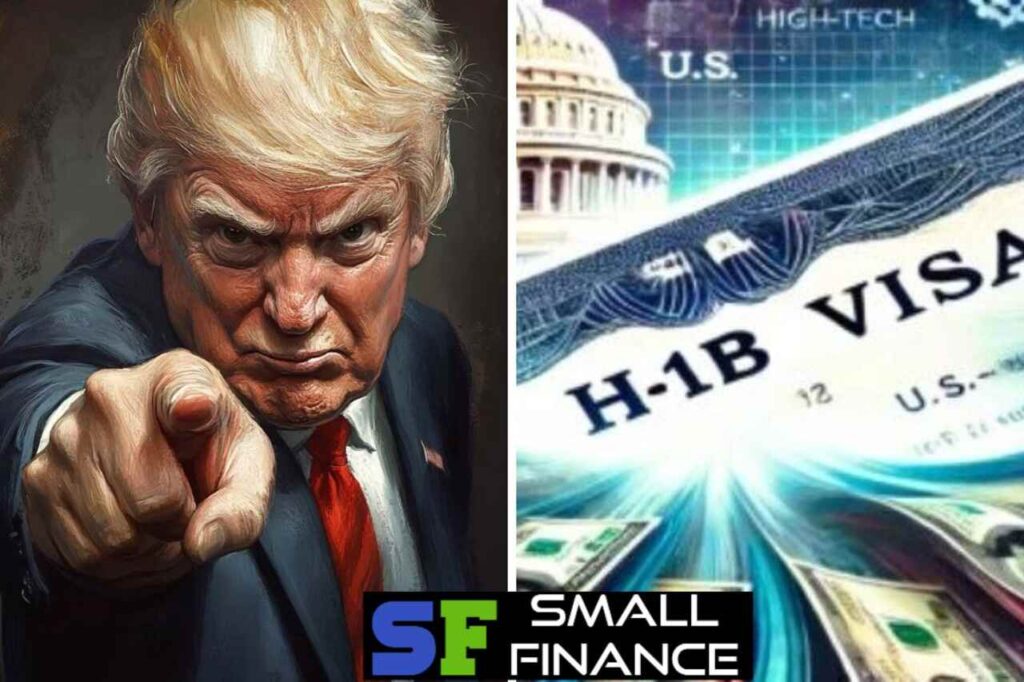President Donald Trump’s latest move to reshape U.S. immigration has sparked intense debate. The administration announced a dramatic hike in the cost of applying for H-1B visas — raising the fee from $215 to $100,000 per application. Supporters frame it as a way to prioritize American workers, while critics warn it could cripple industries dependent on global talent.
This article explores what the new policy means for businesses, foreign workers, job competition, and the broader economy.
What Is the New H-1B Visa Fee Policy?
On Friday, during a signing ceremony in the Oval Office, Trump defended the change by saying America needs “great workers,” and the steep fee ensures only top talent will qualify.
Commerce Secretary Howard Lutnick echoed that sentiment, adding:
“The company needs to decide if the person is valuable enough to justify a $100,000-a-year payment to the government, or hire an American instead.”
The new fee applies only to fresh H-1B petitions starting Sunday, 12:01 a.m. ET. It will remain in effect until September 21, 2026, unless extended. Importantly, the White House clarified:
-
It’s a one-time fee, not an annual charge.
-
It does not apply to renewals or current visa holders.
-
Current H-1B holders traveling abroad can still reenter without paying the new cost.
Which Workers and Companies Will Be Affected?
The H-1B program issues about 85,000 visas annually, with an additional 20,000 reserved for advanced U.S. degree holders. Industries most dependent on these visas include:
-
Tech & Computer Science: 64% of all approvals in FY 2024.
-
Engineering & Architecture: 10%.
-
Education roles: 6%.
The top industries hiring H-1B workers were professional, scientific, and technical services (48%), followed by manufacturing (11%).
Leading sponsors in FY 2024 included:
-
Amazon (9,000+ visas)
-
Google (5,364 visas)
-
Meta (4,844 visas)
-
Microsoft (4,725 visas)
-
Apple (3,873 visas)
Large corporations with trillion-dollar market capitalizations may absorb the cost, but startups and small businesses could find the $100,000 barrier prohibitive.
What Does This Mean for Job Competition?
Supporters argue the change will open doors for American graduates, especially in tech, who are struggling in a tough job market marked by layoffs and fewer opportunities.
However, critics note that previous visa restrictions did not always translate into American hires. During the pandemic, when immigration slowed and visas were restricted, job openings actually hit record highs due to labor shortages.
The median salary for H-1B holders in 2024 was around $120,000, suggesting companies aren’t necessarily using the program to cut costs, but rather to access specialized skills.
How Might Companies Respond?
Some firms may continue paying the higher fee to secure elite talent, while others could:
-
Shift hiring abroad, expanding teams in countries like India, China, or Canada.
-
Delay hiring in specialized areas where domestic candidates are limited.
-
Reassess entry-level hiring, since the fee is harder to justify for lower-wage roles.
This dynamic could reshape global hiring strategies, forcing companies to rethink where and how they recruit.
Could This Policy Face Legal Challenges?
Legal experts argue the move could be unconstitutional. Aaron Reichlin-Melnick, senior fellow at the American Immigration Council, stated:
“The president has zero legal authority to impose a $100,000 fee on visas. Congress only allows fees to recover administrative processing costs.”
If challenged in court, the fee might be struck down, though litigation could take months or years.
Key Takeaways
-
High stakes for tech: Major tech firms will absorb the fee, but small businesses may struggle.
-
Job market shifts: U.S. graduates in computer science may see more opportunities, but labor shortages in specialized fields could persist.
-
Legal uncertainty: The fee faces serious constitutional challenges, making its long-term survival unclear.
Final Thoughts
Trump’s $100,000 H-1B fee represents one of the most aggressive attempts to reshape U.S. immigration in decades. While the policy aims to prioritize American workers, its ripple effects could include talent shortages, higher outsourcing, and prolonged legal battles. The outcome will determine not just the future of H-1B visas, but also America’s role in the global competition for skilled labor.
Read Also:

